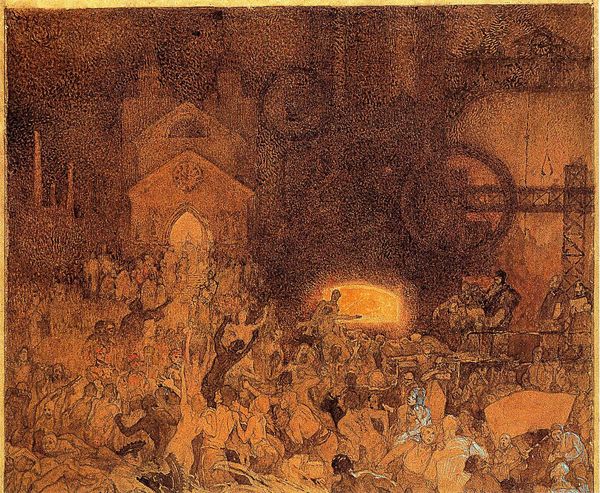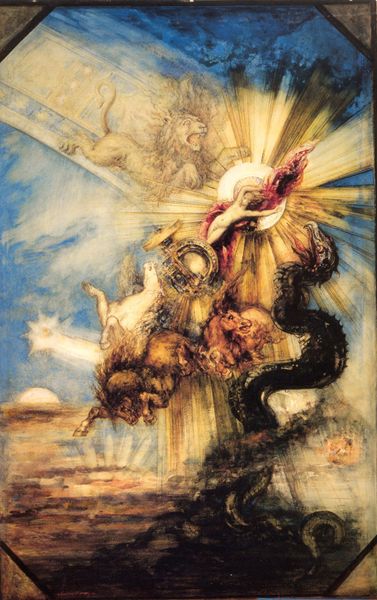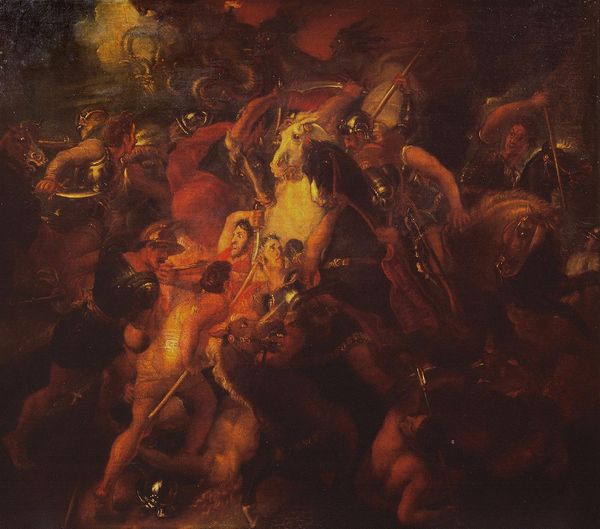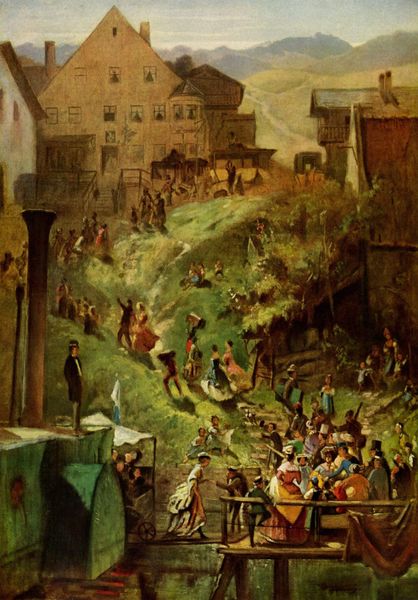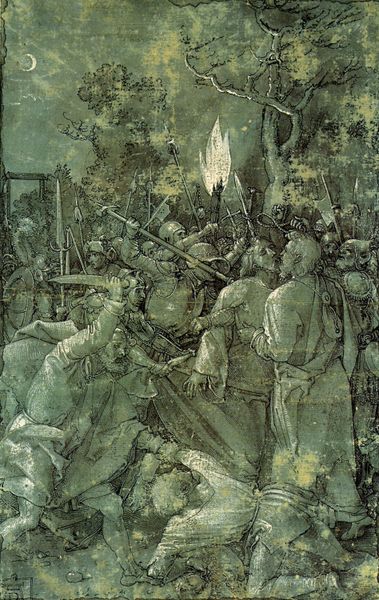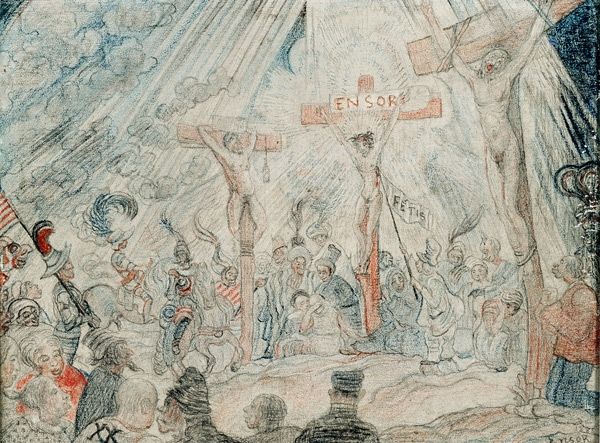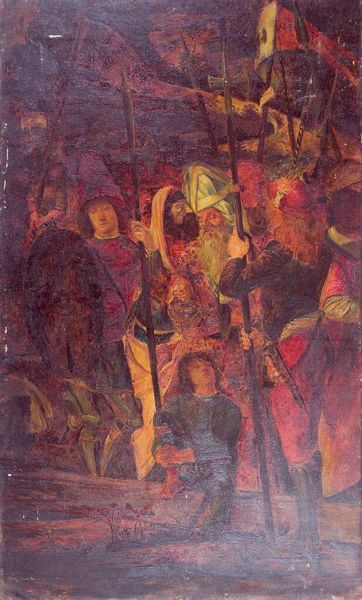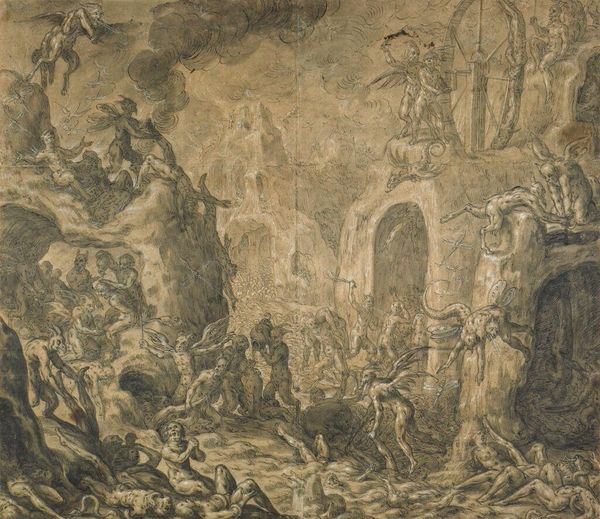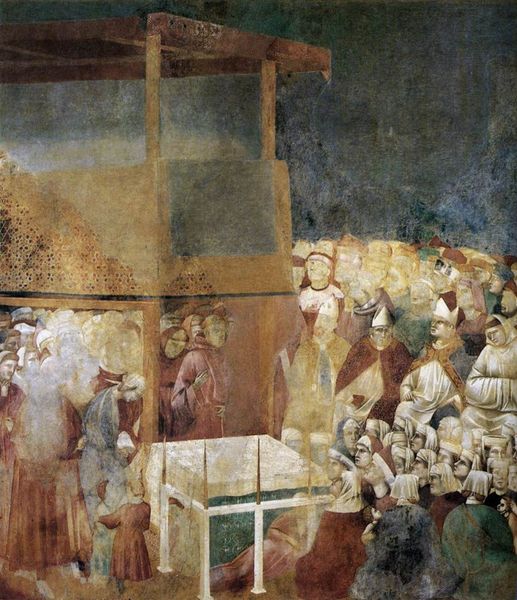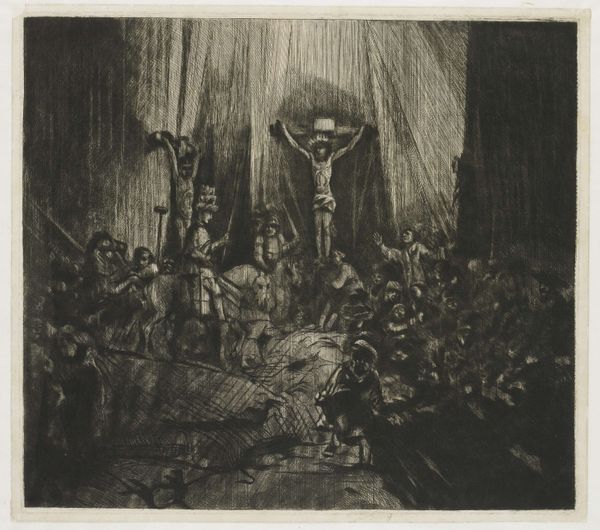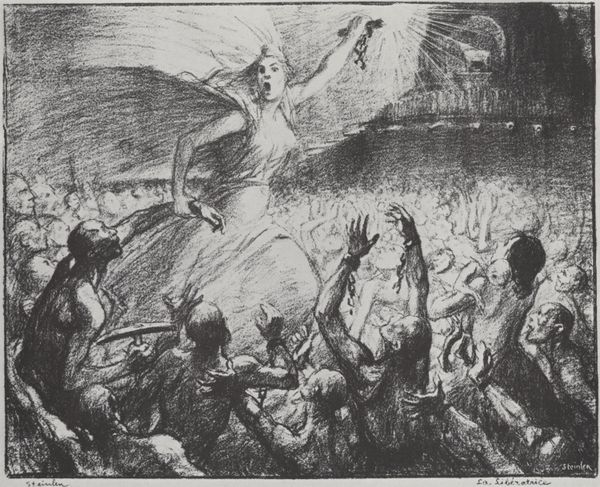
photography
#
impressionist
#
abstract expressionism
#
abstract painting
#
cave painting
#
impressionist painting style
#
war
#
impressionist landscape
#
photography
#
fluid art
#
soldier
#
abstract nature shot
#
watercolor
#
expressionist
Copyright: Public domain
Curator: Immediately, I'm struck by the all-encompassing warmth in this piece, almost fire-like in its intensity. The colors certainly evoke a sense of conflict, struggle… is it a battlefield? Editor: It is indeed, but of a specific kind. What you're seeing is Alphonse Mucha's "Defense of Sziget against the Turks," completed in 1914. Mucha is mostly known for his art nouveau style but this one is something else. The painting presents a pivotal historical siege, reflecting a deep concern with national identity. Curator: Ah, the layering! I see soldiers emerging now—forms coalescing from chaos, but always deferring to this ominous tower...it's quite symbolic, as though civilization itself hangs in the balance. Editor: Absolutely. Szigetvár held significant symbolic weight in Hungarian history, representing resistance against Ottoman expansion. This image isn't merely depicting an event; it's creating a narrative about national character and heroic sacrifice during times of war, much like similar Romantic pieces elsewhere in Europe. Curator: You see that repeated motif throughout European art… the beleaguered fortress standing as an allegory for faith, perseverance, collective memory against a very real geopolitical threat. Editor: Exactly. Mucha here harnesses that visual language but does it with an unmistakable awareness of its historical resonance within a Central European framework. He transforms the physical defense of a fort into the defense of something less tangible but just as vital: a culture’s very being. Curator: It certainly does carry an emotive, rallying message. And looking closer, the figures aren't individualized; rather they're archetypes embodying resilience. The very choice to represent a united populace against such overpowering forces evokes defiance against all historical inevitabilities. Editor: He made sure it served that purpose. Now, reflecting on Mucha's image, what does the representation of this specific historic defense and those depicted in it actually *defend* politically, generationally? Curator: Well, that’s something we need to continuously evaluate when considering not just this painting, but war and imagery, broadly considered. Editor: Agreed. These potent symbols are, after all, how history remembers—and forgets.
Comments
No comments
Be the first to comment and join the conversation on the ultimate creative platform.
